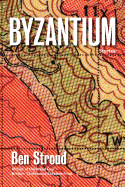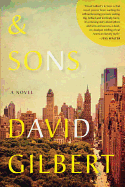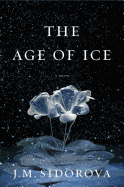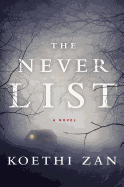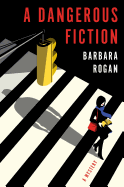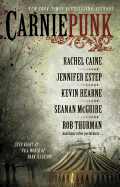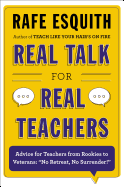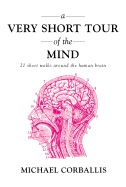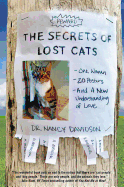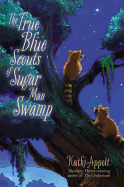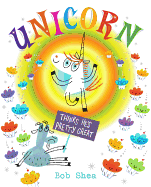 |
| photo: Susie Gilbert |
David Gilbert's 1998 debut, a collection of short fiction titled Remote Feed, includes his early offbeat stories from the New Yorker and Harper's, among other sources. The Normals (2004), Gilbert's first novel, follows an underachieving Harvard grad whose escape from a threatening student loan collector becomes a lesson in surreal side effects. In his ambitious second novel, & Sons (see our review below), Gilbert uses a broad array of literary devices--unreliable narration, multigenerational character strands, epistolary insertions, mutating plotlines and novel-within-the-novel excerpts--to examine the centrifugal effect of ego on an aging novelist's attempt to unify his far-flung progeny. Gilbert lives in New York with his wife and three children.
When you started writing & Sons, did you intend to showcase so many characters in detail?
I always had five main characters in mind. I sort of "borrowed" the structure from Richard Powers, where you alternate chapters between a connected group of people. Not only does this make for a more enjoyable writing process--if bored or stuck, simply move on to the next person--but it also hopefully hooks the reader with at least one storyline he or she might find intriguing. It's a wonderful device, sort of like Three-card Monte. The only character who popped up in unexpected places was Philip Topping, which was appropriate, considering his role as the narrator.
Although it's a novel of substantial length, & Sons really clips along. How many years and drafts did it take you to write? What tools did you use to keep the character through-lines in balance?
It took me about five years to write, three of those years totally dedicated to the book. Though I am a big believer in multiple drafts, of writing quickly and recklessly, without worrying too much about quality, writing in order to re-write, which is the real business of writing, I am unfortunately not a follower of this particular creed. I am an insecure writer. I write slowly and laboriously. I cannot move forward until I feel the paragraph above is in the best shape possible. Every page is a game of Jenga: a precarious exercise in physical and emotional balance, often ending in a mess on my desk. That said, when I'm finished, I'm pretty much finished. Kaput, too.
Before starting the book, I diagramed a very rough outline on a single sheet of paper--the order of appearance for the characters, the plot points, the various destinations. Epilogue, prologue, eight chapters, three parts per chapter. It was detailed enough so that I knew where I was going without having any idea of how I was going to get there, sort of like the way I drive.
How did you arrive at the title & Sons, and did you or your publisher have any concerns about its search-engine impracticality?
I like the ghostly remains of a family business that the title conveys, the lingering effects of paternal incorporation. And I always wanted the ampersand. I love a good ampersand, and I crafted the book around its many meanings and incarnations, from a rough correspondence to the shape of a double helix, of a pretzel, a knot, etc., to the etymology of that particular ligature, to A.N. Dyer and his many acts of ego, beginning with his first novel [Ampersand]. I never considered how it would come up on an online search. Oops. I believe there was a debate within the publishing house--"Um, how about And Sons?" for instance--but at the end of the day everyone agreed that the ampersand itself was too important to untie for the sake of the almighty Internet.
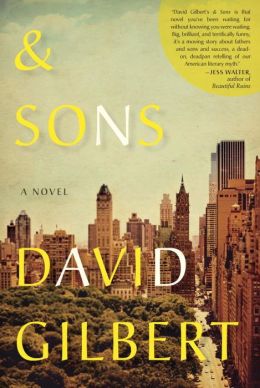 Not to be impertinent, but why no daughters?
Not to be impertinent, but why no daughters?
Not impertinent at all. It all came from the title, which emerged early on in my thoughts about the book, and for lack of imagination I stuck to the notion of this being primarily about fathers and sons (and the wives and mothers who buoy them). I myself have three children, a boy and two girls, and the relationship I have with my son is so very different from the relationship I have with my daughters. I see my son and I feel my own youthful injuries, my own insecurities, my own fraught feelings for Dad. It is both a mirror and a door. And the emotional baggage involved. Yikes. My son is a repatriation to a war-torn country, while my daughters are a trip to an exotic, if vaguely confusing, island.
Philip Topping, the narrator of & Sons, combines the bystander perspective of Nick Carraway in The Great Gatsby with the voyeuristic intimacy of the unnamed narrator of James Salter's A Sport and a Pastime, only distributed across many more characters. How did you arrive at this hybrid voyeur-omniscience?
I wanted to challenge myself and this seemed a big challenge: how to write a third person narrative under the guise of a single perspective, aka Philip Topping. I was greatly inspired by Philip Roth and how he, via Zuckerman, accesses his particular stories. & Sons is about a writer--A.N. Dyer--who uses his friends and family to fill his fiction, so the narrator is in a sense a turning of those tables, a story about the writer and his sons told by one of his real-life characters. It also allowed me to explore the question of reliability and voice and perspective. Who is telling what? And how? It added layers of meaning to the project. It often seems to me that words are the least interesting part of writing.
If you count Philip, there are four significant sons in & Sons. Who is your favorite son in the novel and why? (Please avoid spoilers.)
No spoilers. I sort of like them all and can relate to each for different reasons, but Andy was the most fun to write, since he's only 17 and his age and attitude allowed me to riff a bit more. He also has the most basic of motivations: losing his virginity.
What particular challenges face the sons of a famous father, both as siblings and as offspring, and how did you get insight into those challenges?
I had only my imagination to go on. My father was successful in the realm of investment banking, but this was a while back and his "fame" never extended beyond the then clubby world of finance, a world I had zero desire to enter. But I think the biggest challenge for the offspring of the rich and famous (to steal from Robin Leach) is to find an autonomous identity. If your father is this well-known figure, it can tank your own sense of self and leave you adrift, floating from persona to persona, hoping you might land on a place that is truly home. Embracing your famous father (or famous mother) means embracing their fame and losing your independence, so maybe you fight against that instinct and deny their celebrity, and then suddenly, ugh, you're just like everyone else.
Ampersand, the fictional prep school novel excerpted within & Sons, dramatizes an important incident in the paternal generation, and the book's success affects all the sons in the novel. What's your favorite prep school novel and why?
I'm going to say A Good School, because it is little known and Richard Yates is so fabulous and it's such a real, honest, human book.
Adolescent experiences seem to influence the present disproportionately for many of the characters in & Sons, but this also seems to be a common human tendency. Why do you think this is?
I wish I knew. And I wonder if it's more a male thing than a female thing or are we all stuck staring back, wincing at our younger selves? I do think we exist in a constant coming of age, right up to the end, the repercussions of adolescence, of trying to figure how we fit in this world, echoing across our skin until the day we grow cold. I cannot access my five-year-old self, or my 10-year-old self, but I can dip into my 17-year-old self with an ease that seems frightening. And the thing about those years, if you were a success, is the nostalgia is almost crushing, and if you were a failure, the injury is still raw. There seems no winning. Puberty is a nuclear event, and we adults live in its fallout.
At what point in the composition of & Sons did you write the letters and postcards that preface the novel's sections? How did you choose the handwriting for the facsimiles, and who wrote them?
I wrote them as I went along, though I knew the general content and spread of years before I began. I initially used a lame font that replicated cursive, but it was Simon M. Sullivan, the book designer at Random House, who made them look like absolute magic. It's his handwriting on that long Charlie Topping letter, and he had a friend, Laurel Bestock, write all of the A.N. Dyer letters. When I saw what they had done, I was floored. These letters now feel like objects, relics of the past. It pushes the reality even farther forward.
Given the recent brouhaha over character likability, do you consider this issue when you write?
Not really. Everyone is both likable and unlikable, depending on timing and mood. To me, what's most important is whether a character is knowable--maybe understandable is the better word. How about human? Trying their best? I don't really trust likable. If someone said, that Dave Gilbert, what a likable guy, I would find that someone instantly unlikeable. Now lovable, that's a different story. But love includes flaws, the blind spots of character. Like is too weak to include anything but a passing regard. A likable book is a failure in my mind.
The writer-patriarch of & Sons is obsessed with last words--the last words of novels, the last words spoken in parting, and the last words of a person's life. What are your favorite last words?
A tie between Thoreau--"Moose. Indian."--and Walt Disney: "Kurt Russell."
--Holloway McCandless, blogger at Litagogo: A Guide to Free Literary Podcasts
David Gilbert: Ampersands & Adolescence




 Not to be impertinent, but why no daughters?
Not to be impertinent, but why no daughters?